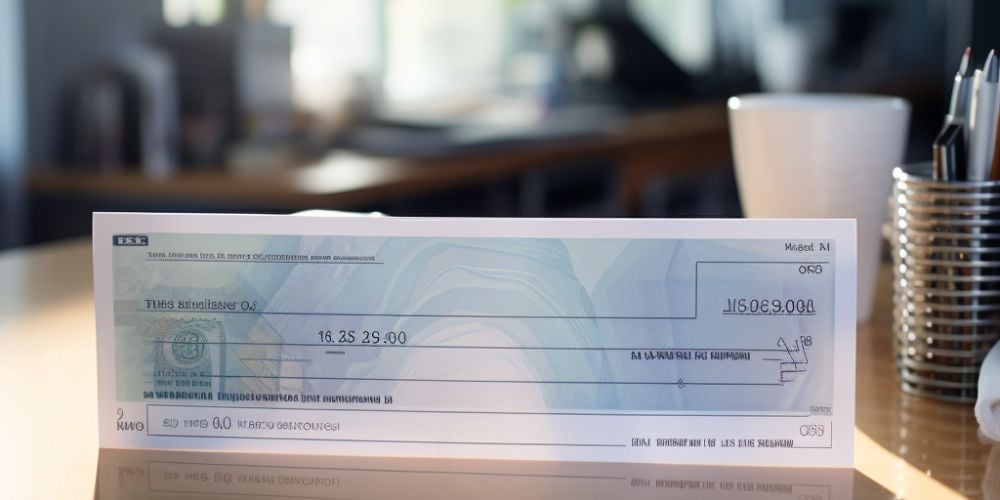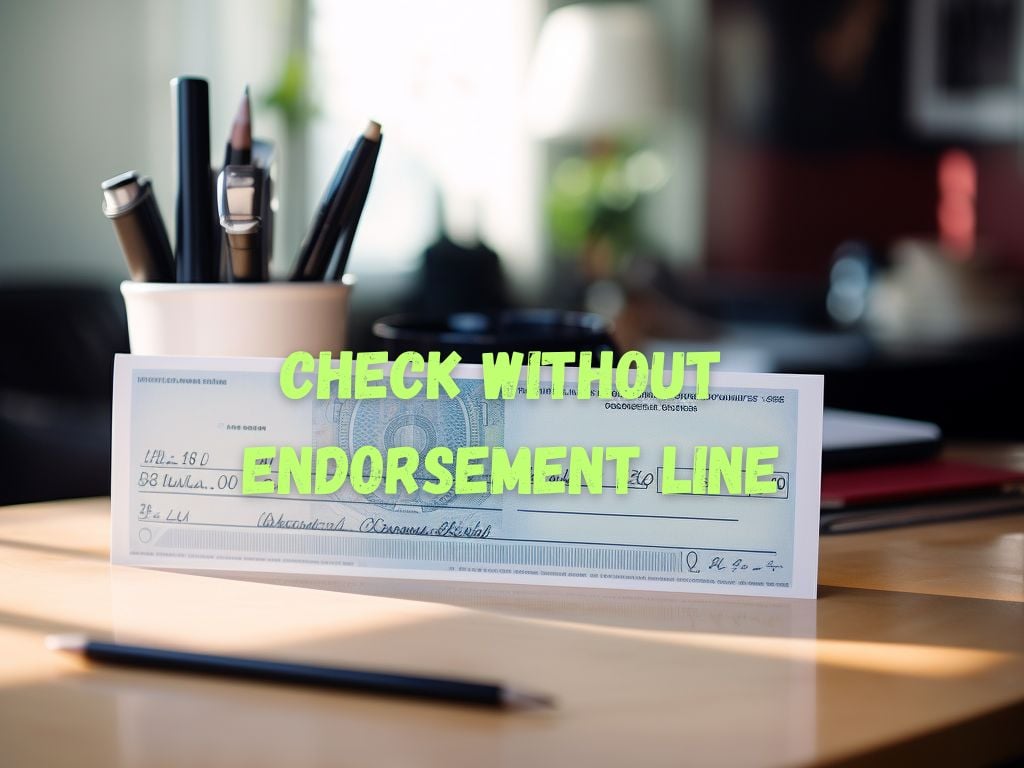Imagine receiving a check for an important payment, only to discover that it lacks the endorsement line on the back.
You may wonder, “What should I do now?” In this comprehensive guide, we will walk you through the steps to take when faced with a check without endorsement line.
We’ll explain the implications, discuss deposit options, and provide useful tips to ensure a smooth transaction.
Can You Deposit a Check Without Endorsement Line?
When faced with a check lacking an endorsement line, one of the first questions that may arise is whether it can still be deposited. The answer largely depends on the policies of your bank or financial institution.
Different banks have varying rules regarding the acceptance of such checks. Some banks may accept them without any issues, while others may require additional steps or documentation.
To determine your bank’s policy, consider reaching out to them directly.
Contact their customer service or visit a branch to inquire about their check endorsement requirements. They will be able to guide you on the specific steps you need to follow to deposit a check without an endorsement line.

How to Handle a Check Without an Endorsement Line
If your bank allows for the deposit of checks without an endorsement line, it’s important to understand the proper process for endorsing such checks.
Follow these step-by-step guidelines:
Locating the Appropriate Place to Endorse the Check
In the absence of a designated endorsement line, look for a blank space on the back of the check where you can endorse it. This space is typically found towards the top or bottom of the back of the check.
Look for any designated areas where endorsements are commonly placed.
Guidelines for Proper Endorsement Without an Endorsement Line
When endorsing a check without an endorsement line, ensure that you write clearly and legibly to avoid any confusion.
Consider the following tips:
Sign your name as it appears on the front of the check.
Avoid additional marks or written comments around the endorsement area.
Use a pen with dark ink to ensure clarity and legibility.
Ensure your signature fits within the available space without overlapping any important information.
Alternatives to Traditional Endorsement Methods
Apart from the traditional method of endorsing a check, there are a few alternative approaches you can consider:
Signing the Check Near the Payee’s Name
One option is to sign the check close to the payee’s name on the front of the check. This method clearly indicates that you, as the payee, endorse the check for deposit or cashing.
Using a Restrictive Endorsement
A restrictive endorsement involves adding specific instructions or limitations to the check.
Write “For deposit only” followed by your account number beneath your signature. This restricts the check to be deposited into your designated account only, providing an additional layer of security.
Endorsing the Check to Another Person
In some cases, you may need to endorse the check to another person. If this is necessary, write “Pay to the order of [Recipient’s Name]” followed by your signature. This indicates that you are transferring the check’s ownership to the specified individual.
Tips for Smooth Processing of Checks Without an Endorsement Line
To ensure a seamless transaction and avoid any complications, consider the following tips:
Communicating with the Bank
When dealing with a check lacking an endorsement line, it’s crucial to communicate with your bank.
Contact their customer service and inform them about the type of check you have received.
Seek clarification on any specific requirements or procedures associated with such checks.
By doing so, you can avoid potential delays or rejections during the deposit process.
Potential Issues to be Aware of
While it is possible to deposit a check without an endorsement line, there are potential issues to be mindful of:
Delayed Processing or Holds on Funds:
Depending on your bank’s policies, checks without an endorsement line may go through additional scrutiny, leading to delayed processing or temporary holds on the funds. Be prepared for potential delays and plan accordingly.
Risk of Accidental Double Endorsement:
Without a designated line, there is a higher risk of accidentally double endorsing the check. Exercise caution and ensure you only endorse the check once in the appropriate area.
Protecting Against Fraud or Misuse:
As with any financial transaction, it’s important to be aware of potential fraud or misuse. Keep your endorsed checks secure and monitor your account for any unauthorized activity.

Frequently Asked Questions
To address common queries, here are answers to some frequently asked questions related to checks without an endorsement line:
Can I deposit a check without signing it?
No, checks need to be properly endorsed to be deposited or cashed. However, if the check lacks an endorsement line, follow the guidelines outlined above to endorse it correctly.
What if my bank refuses to accept a check without an endorsement line?
If your bank refuses to accept a check without an endorsement line, consider alternative options, such as reaching out to the check issuer to request a replacement check with the appropriate endorsement line.
Are there any legal implications with endorsing a check improperly?
Improperly endorsing a check may result in complications or delays in processing. While it might not have legal implications in itself, it’s important to follow proper procedures to ensure a smooth transaction.
Can I use mobile banking to deposit a check without an endorsement line?
Mobile banking deposit options for checks without an endorsement line may vary by bank. Contact your bank to inquire about their specific mobile deposit policies for such checks.
Conclusion
Receiving a check without an endorsement line can be initially perplexing, but armed with the knowledge provided in this guide, you can confidently handle such checks.
Remember to check with your bank to understand their policies, follow the proper endorsement procedures, and be aware of any potential issues.
By doing so, you can ensure a smooth deposit or cashing process and protect yourself from any unnecessary complications.


 Tags:
Tags:










